Connect Shopify with QuickBooks Online - PayTraQer
November 14, 2025
How to integrate Shopify with QuickBooks Online using SaasAnt PayTraQer
PayTraQer connects your Shopify store to QuickBooks Online. It syncs orders, refunds, fees, and payouts using your rules so deposits match and reports stay accurate.
Who this is for
Bookkeepers and accountants supporting Shopify stores
Store owners who want clean books without manual entry
Teams comparing sync tools and looking for a safe first setup
Before you start
An active QuickBooks Online company
QuickBooks Online login with admin access
Your Shopify admin credentials
Optional: access for payment processors used in Shopify (Shopify Payments, PayPal, Stripe)
Quick setup: 5-minute success path
In QuickBooks Online, open Apps or Integrations, search PayTraQer, click Get app now, and authorize.
Choose Sync Mode: Consolidated (summary) or Itemized (one entry per order). Click Get Started.
In PayTraQer, go to Connectors → eCommerce connectors → Shopify → Connect, then sign in and approve.
Set Bank Account to deposit your sales/income to Shopify Bank Account. Save.
PayTraQer automatically downloads the last 60 days.
Turn on Auto Sync if you want PayTraQer to fetch and post new orders on a schedule.
In QuickBooks, verify one sale, one fee, and if enabled, one payout transfer.
Step by step Guide
1) Install PayTraQer from QuickBooks
Open Apps or Integrations in QuickBooks Online
Search PayTraQer and click Get app now
Click Connect when prompted to allow access
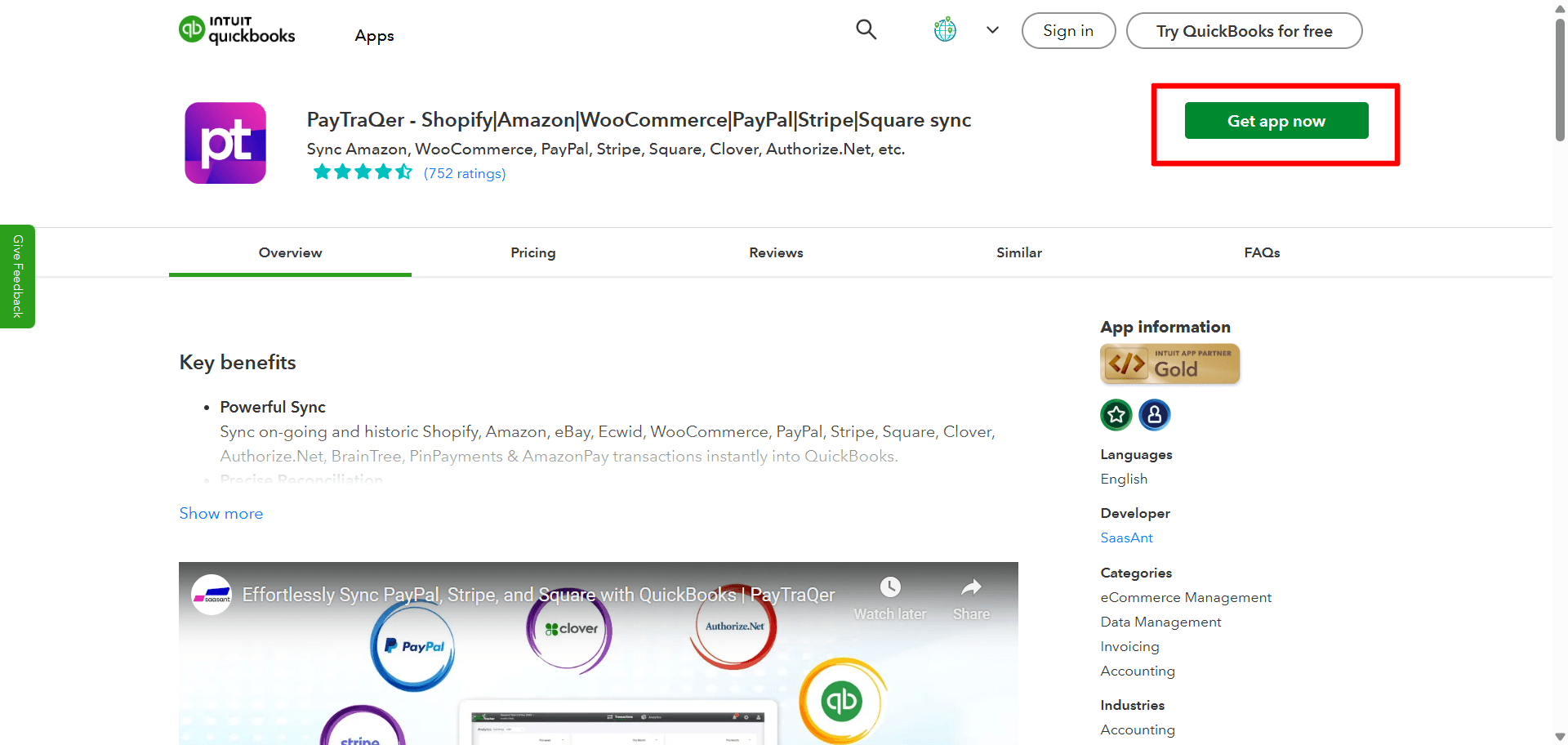
Enjoy the free trial to test your first sync
2) Choose your Sync Mode
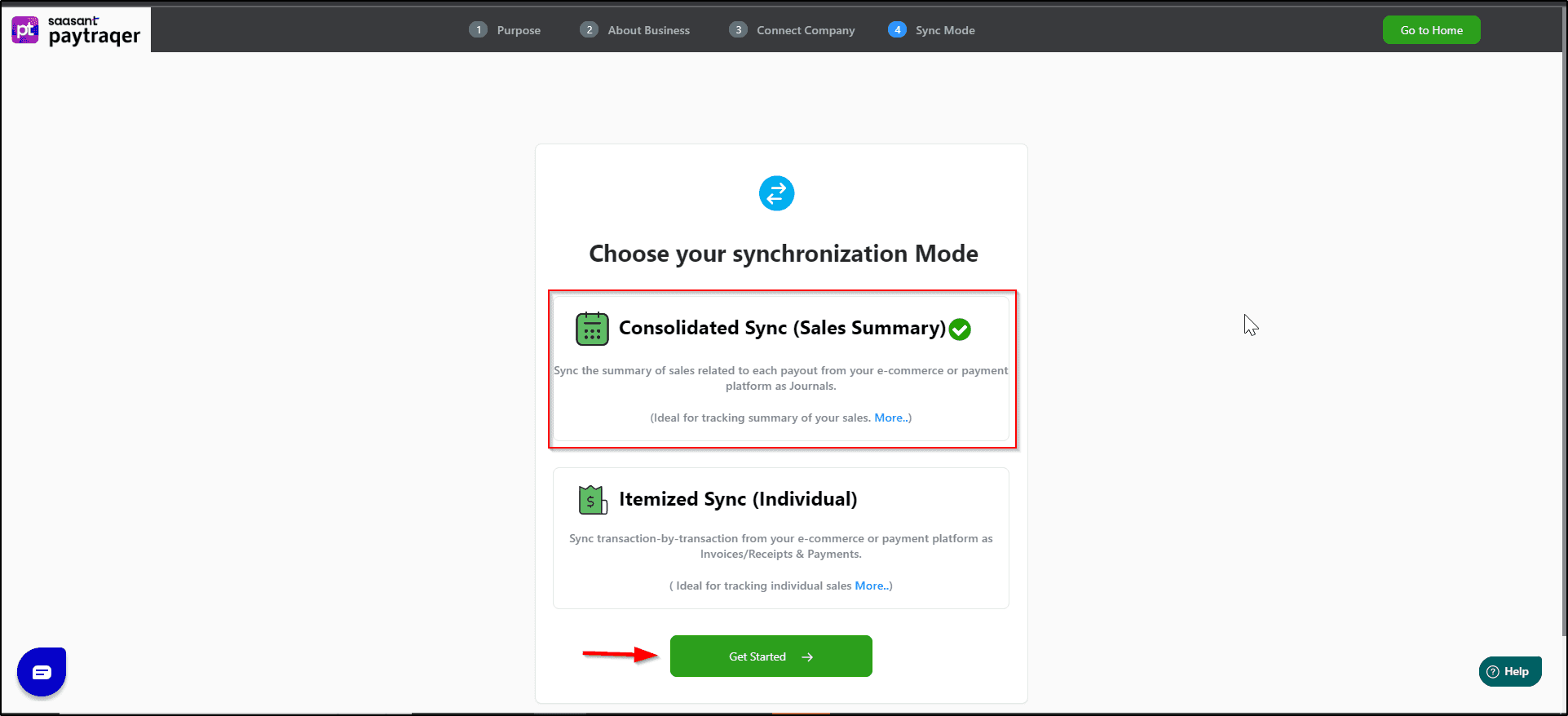
Choice | When to use | What you get |
Consolidated (Sales Summary) | High order volume, need fast bank match | Fewer entries by day or payout; limited customer and item detail |
Itemized (Individual) | Need customer or item reporting | One entry per order with full detail |
You can change this later in settings. Test a short date range before switching.
3) Connect Shopify
In PayTraQer, open Connectors → eCommerce connectors → Shopify → Connect
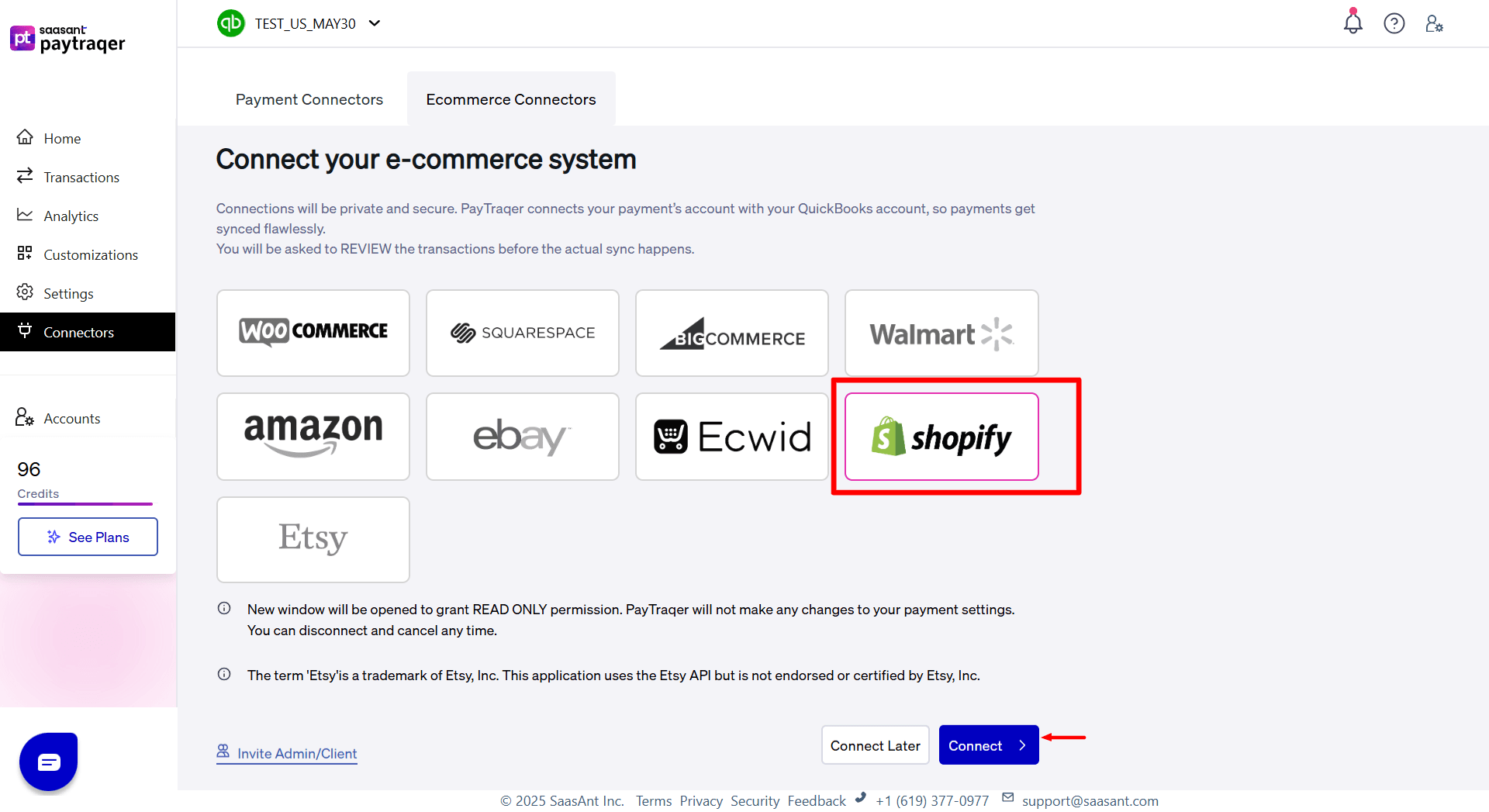
Sign in to Shopify and approve access
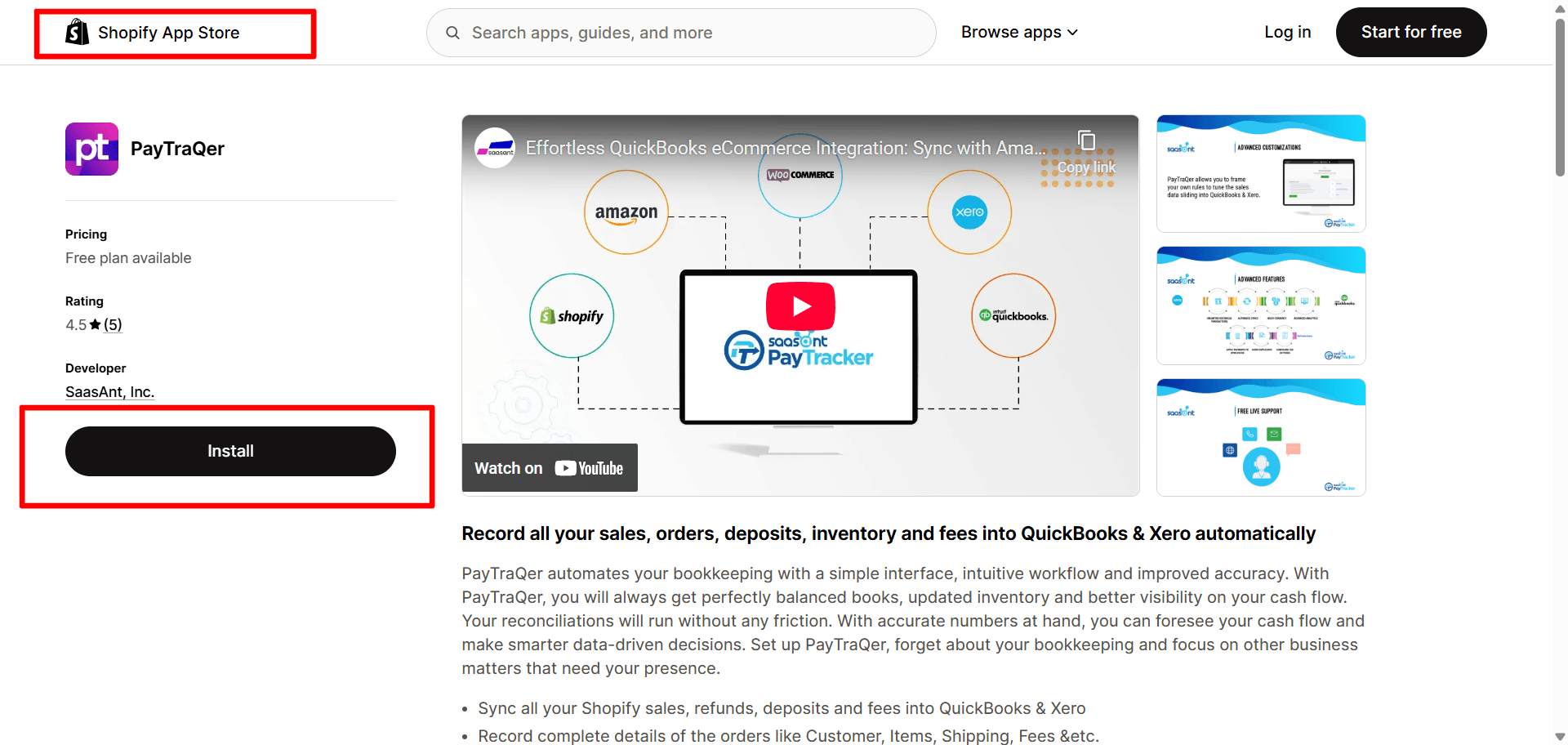
If you are not the admin, use Invite admin/client to send the authorization link
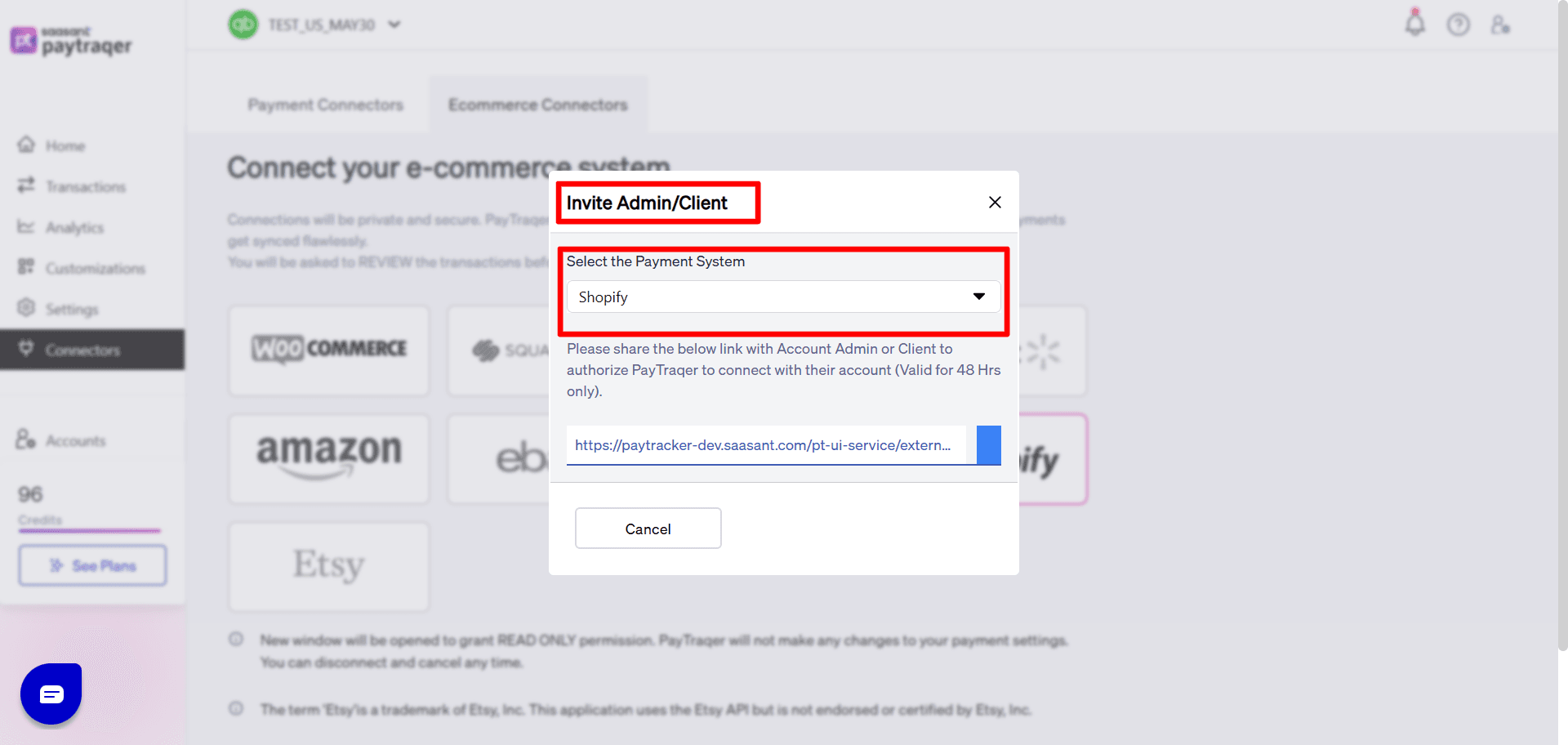
4) First-time settings
Sales clearing bank: set Bank Account to deposit your sales/income to Shopify Bank Account per currency
Payouts: decide if you want PayTraQer to create transfers to your checking account
Save: PayTraQer auto-downloads the last 60 days
Need other dates: use Download historical transactions with date filters

Auto Sync: toggle on and set the interval to keep data flowing automatically

What the sync does
Commerce system | QuickBooks entry created |
|---|
Payment | Sales Receipt, Fees as Expense |
Invoice Payment | Invoice, Payment or Sales Receipt, Fees as Expense |
Bank Payout | Bank Payout |
Customer Refund | Refund |
Expense | Expense |
Notes
Fees post to your fee expense account with vendor set to Shopify
Payouts, when enabled, create a transfer that matches your bank deposit
Configure posting rules
Each section shows what it controls, a safe default, when to change it, and how to check.
Sales settings
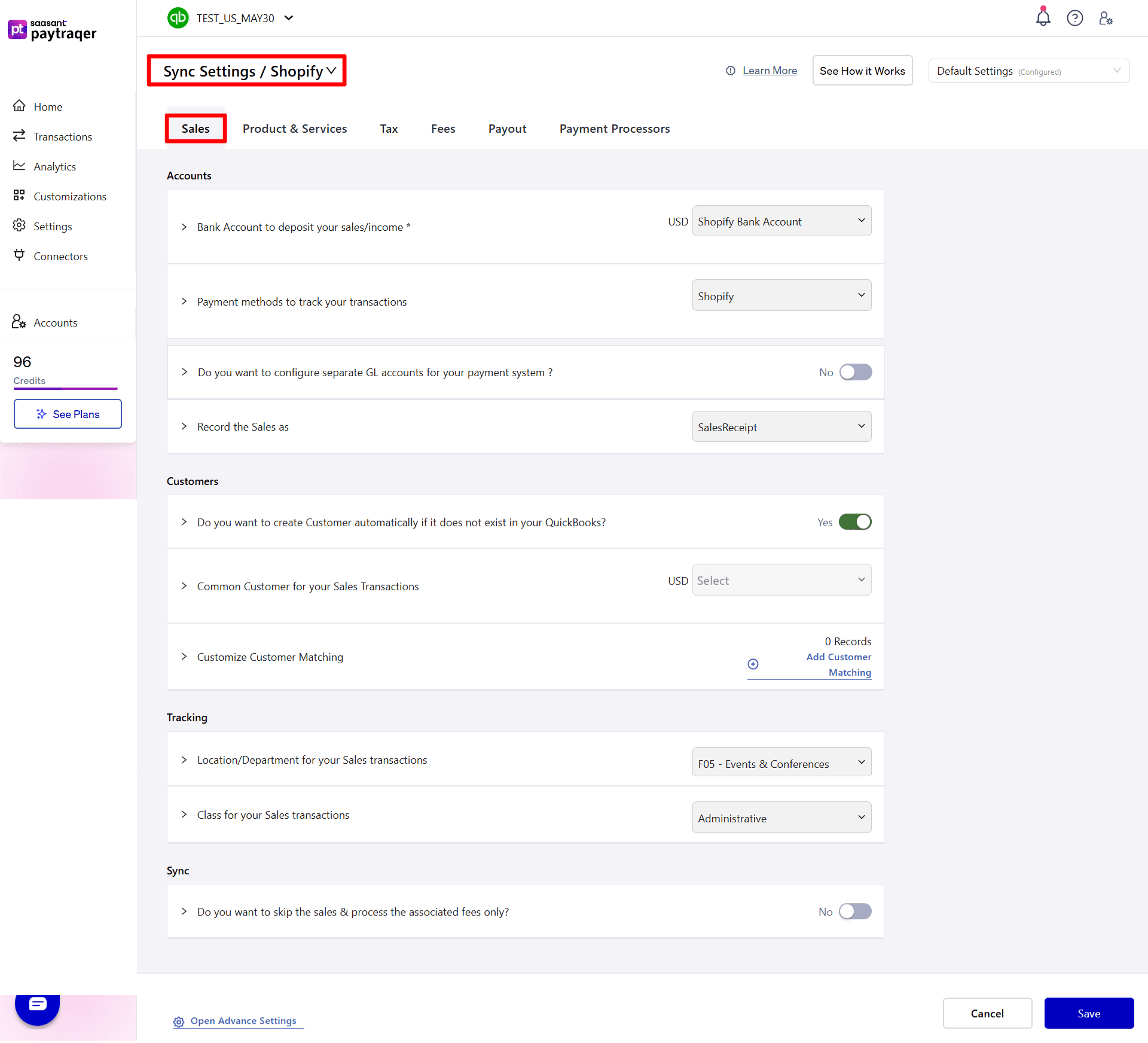
Accounts
Bank Account to deposit your sales/income
Default: Shopify Bank Account per currency
Change when: You keep separate clearing banks by currency or brand
Check: Sales and fees land in the same clearing bank
Payment method
Payment methods to track your transactions
Default: Shopify
Check: Payment Method shows Shopify on created sales
Separate GL by payment system
Do you want to configure separate GL accounts for your payment system
Default: No
Use when: You link additional processors under Connectors → Payment connectors and want different GL routes per processor
Check: Posting accounts change based on the payment source
Record the Sales as
Default: SalesReceipt
Use when: Switch to Invoice if you bill first and collect later
Check: New sales use the selected form
Customers
Create Customer automatically if it does not exist
Default: Yes
Check: No missing customer errors
Common Customer for your Sales Transactions
Default: Off
Use when: You run summaries or do not need per-customer detail
Customize Customer Matching
Use when: Buyer names differ from QuickBooks
Check: Repeat buyers map to one customer record
Tracking
Location/Department and Class
Your example: Location set to F05 - Events & Conferences; Class set to Administrative
General use: Pick your own Location and Class values if you track them
Check: New sales carry the selected values
Sync scope
Skip the sales and process the associated fees only
Default: No
Use when: Sales are posted by another system and you only want fee expenses
Products and services Settings

Auto Creation
Do you want to create Products/Services automatically
Default: No in your settings
Implication: Every item used by Shopify must already exist in QuickBooks, or you must use a Common Item
Tip: If you turn this On, choose the item Type for auto-created items
Type for auto-created items
Default when enabled: Non-Inventory or Service
Income Account for auto-created items
Default: Sales
Check: New items point to the correct income account
Match Product
Match Product by
Default: Name
Use when: Switch to SKU if both catalogs have stable SKUs
Customize Product Matching
Use when: Names differ between Shopify and QuickBooks
Check: No duplicate items after sync
Common Item
Use common product/service for all your sales
Default: No
Use when: You post summaries or do not need item detail
Then: Select common product/service to pick the default item
Tax settings
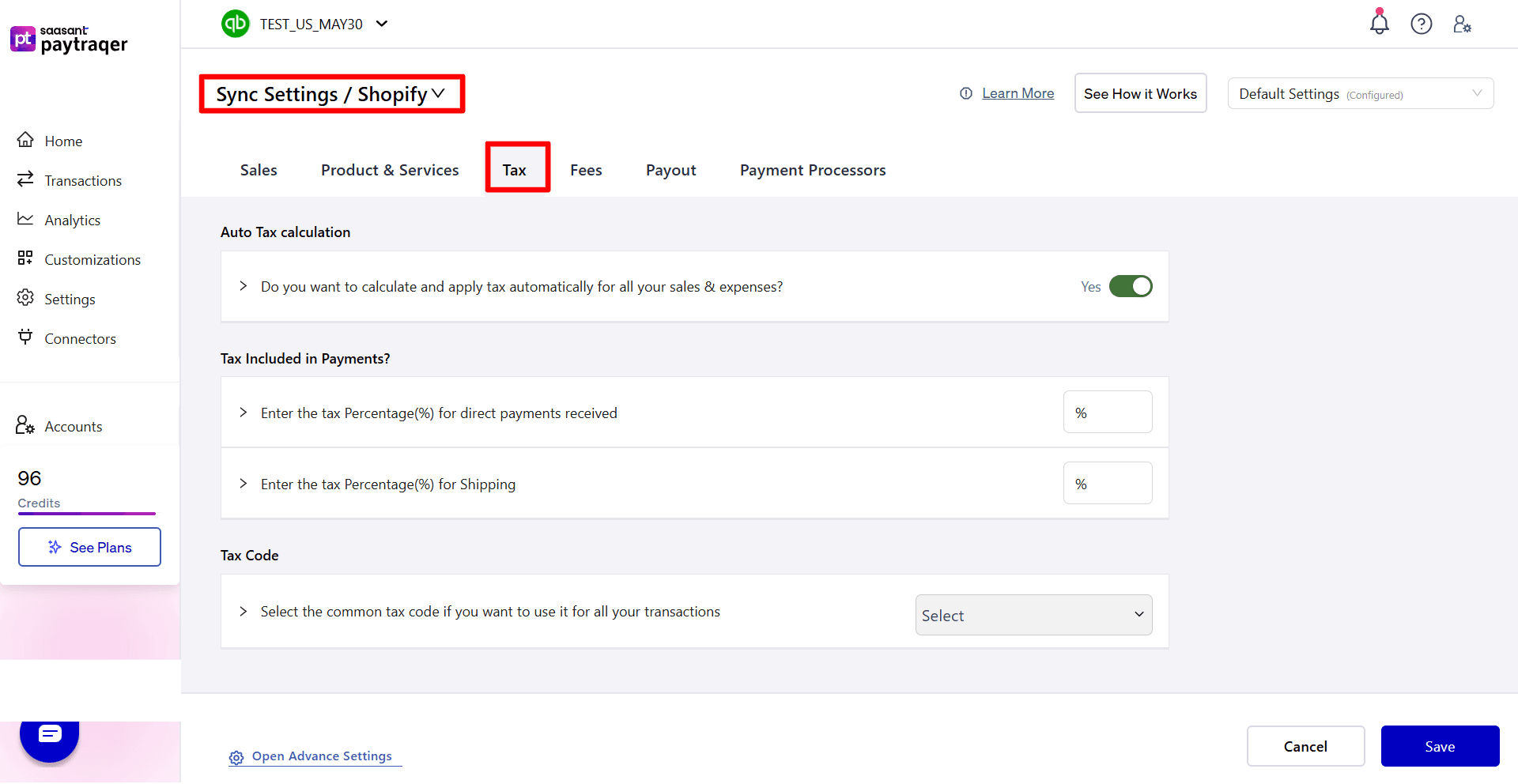
Auto Tax calculation
Default: Yes to detect and apply tax on synced sales and expenses
Inclusive settings
Tax Included in Payments
Enter the Tax Percentage (%) if your direct payments are tax-inclusive
Shipping tax percentage
Enter the Tax Percentage (%) if shipping is taxable
Default Tax Code
Tax Code
Choose a common code to apply to all transactions when required
This overrides automatic detection
Check: Open a synced sale and confirm the tax code and amount
Fees settings
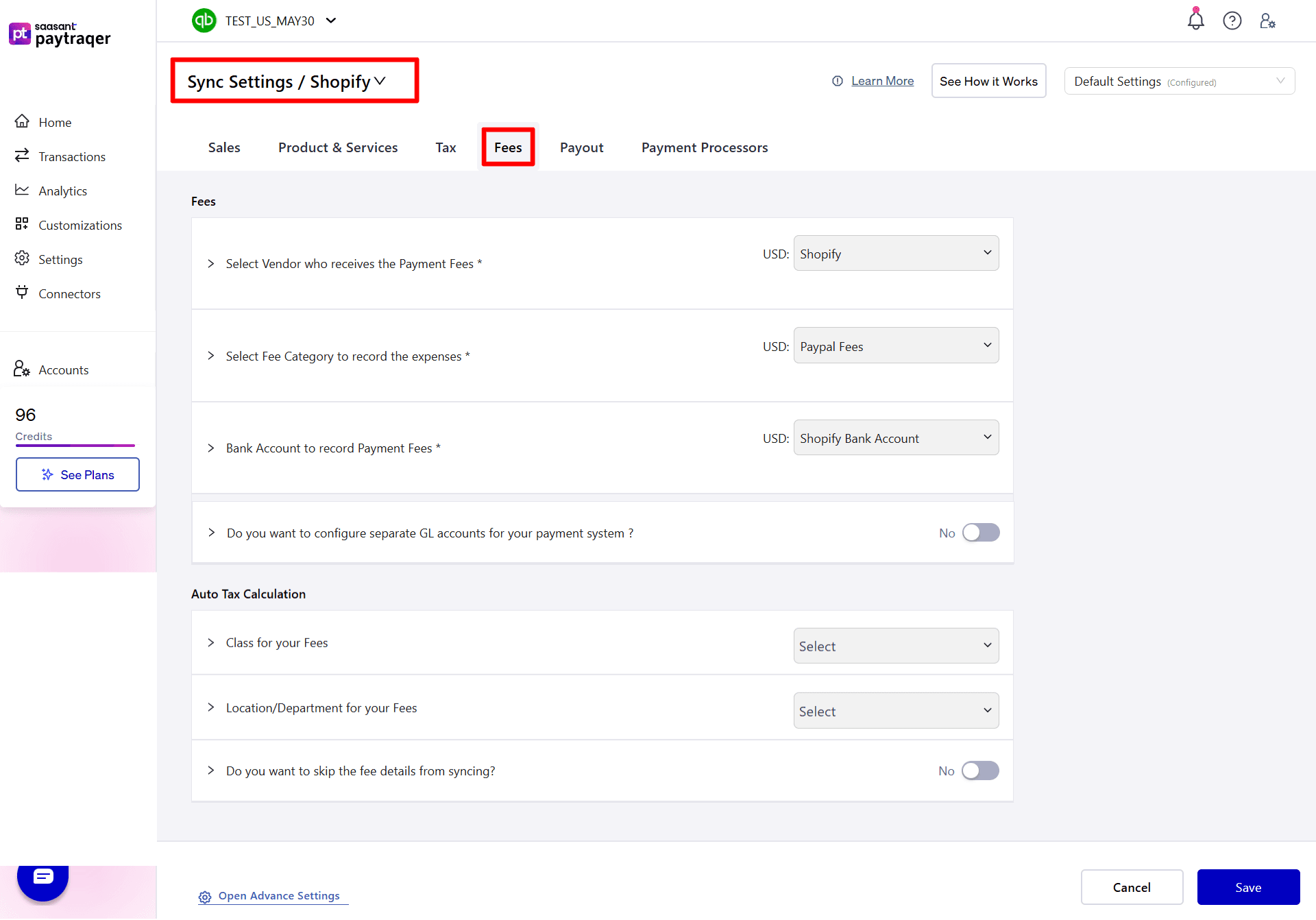
Core fee setup
Vendor who receives the Payment Fees: set to Shopify
Fee Category to record the expenses: choose Shopify Fees or your fee account
Bank Account to record Payment Fees: Shopify Bank Account per currency
Separate GL by payment system: keep No unless you want GL by processor
Class and Location/Department for your Fees: set if you report by these fields
Skip the fee details from syncing: keep No to capture fee lines
Payouts and settlements Settings

Do you want to process the payouts/settlements
Default: No
Turn On to create Bank Transfer transactions from the Shopify clearing bank to your checking account
Check: Transfers match deposits in your bank feed when enabled
Clearing account vs checking account
The clearing account holds Shopify sales and fees inside QuickBooks.
The checking account is your real bank that receives the payout.
When payouts are on, transfers move money from clearing to checking so the clearing account nets to zero.
History and automation
Download historical transactions: after first connect, pull other date ranges using the date filters
Auto Sync: toggle on to download and post new transactions automatically at your chosen interval
Verify your first sync
Use a short date range, then check these in QuickBooks:
A sale posts to the Shopify Bank Account with SalesReceipt and Payment Method Shopify
Customer names follow your Customer Matching rules or your common customer
Items exist and map correctly, or you used Common Item if you kept auto-create off
One fee expense posts to Shopify Fees with vendor Shopify and the clearing bank
The tax code and amount look right on a sample sale
If payouts are on, a Bank Transfer moves funds to your checking account and matches your bank feed
Troubleshooting
No data after connect
Recheck Shopify authorization and connector status. Confirm date filters.Deposits do not match
Turn on payouts and select your real checking account as the receiving account.Clearing account does not zero
Post sales and fees to the same clearing bank and enable payouts.Wrong item on sales or duplicates
Switch Match Product by to SKU or Name. Add Product Matching rules. Consider turning Auto-create items on.Duplicate customers
Add Customer Matching rules or use a Common Customer for summaries.Tax looks off
Review Auto Tax, Tax Included in Payments, Shipping tax, and Tax Code. Test again.Only need fee entries
Turn on Skip the sales and process the associated fees only.
FAQs
Can I sync Shopify as a daily summary instead of itemized lines
Yes. Choose Consolidated during setup or change it later in Sync Mode.
How do I record Shopify fees to one expense account
In Fees settings, set vendor to Shopify and choose your fee expense account.
What form should I use for Shopify sales
Use Sales Receipts when payment is collected at checkout. Use Invoices if you bill first and collect later.
Can I bring in historic transactions
Yes. Use Download historical transactions with date filters.
Can I route different processors to different GL accounts
Yes. Link processors under Connectors → Payment connectors, then enable separate GL accounts by payment system.